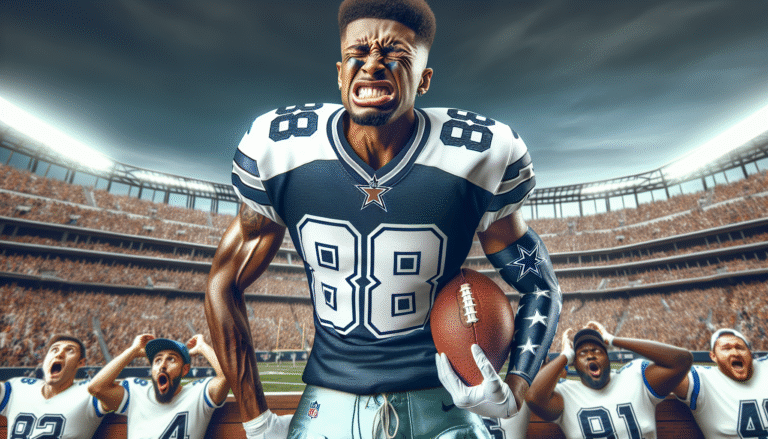CeeDee Lamb’s Injury Sparks Fan Backlash
The Dallas Cowboys faced a challenging situation after star receiver CeeDee Lamb suffered an injury during their recent game against the Chicago Bears. Fans are expressing their frustration, particularly towards offensive coordinator Brian Schottenheimer.
What Happened to CeeDee Lamb?
CeeDee Lamb left the field after sustaining an ankle injury, which occurred due to a controversial tackle. A Bears defender employed a hip-drop technique that many deemed dangerous.
This injury has raised questions about Lamb’s availability for upcoming games, especially after a promising start to the season.
The Diagnosis: A High-Ankle Sprain
Reports indicate that Lamb has a high-ankle sprain, a condition notorious for sidelining players for extended periods—typically four to six weeks. However, Cowboys’ owner Jerry Jones has expressed optimism regarding the severity.
After the game, Lamb was hopeful about playing in the next game, but the news of the sprain complicates matters significantly.
Fan Reactions and Blame Game
The injury has led fans to direct their ire towards Schottenheimer. Many argue that the decision to run a play for Lamb was questionable.
Fans are criticizing the choice to put Lamb in a situation where he was vulnerable to injury, especially when other running options were proving effective.
Examining the Play Call
During the game, Schottenheimer called for a run play involving Lamb. This decision seems to have backfired, given the circumstances around Lamb’s injury.
However, one has to consider the rationale behind getting the ball into the hands of their star player. This strategy isn’t new and has worked in the past.
Are Fans Justified in Their Anger?
While it’s natural to blame the call, it’s also vital to recognize that injuries are an inherent risk in contact sports.
Injuries can happen at any moment, and a freak incident like this isn’t usually indicative of poor coaching decisions.
Understanding High-Ankle Sprains
A high-ankle sprain is particularly tricky. It involves the ligaments that connect two bones in the lower leg.
Simply put, recovery can be unpredictable, and even an optimistic prognosis could lead to further complications.
Schottenheimer’s Track Record
Schottenheimer’s previous decisions have occasionally faced scrutiny. Nonetheless, his role is to maximize the potential of talent, which includes engaging Lamb in various ways.
Evaluating each decision through the lens of injuries can lead to misguided conclusions.
Injuries in Context
It is important to remember that injuries are part of football. Lamb’s unfortunate situation does not stem from a lack of caution.
Instead, it highlights the unpredictable nature of the game. Many high-performing athletes face similar situations.
Moving Forward Without Lamb
The Cowboys will need to adjust their strategies while Lamb recovers. Offensively, they might rely more heavily on alternatives to fill the void.
Other players will need to elevate their performance in Lamb’s absence to keep the team competitive.
Future Prognosis
As recovery progresses, the coaching staff and medical personnel will determine the best path for Lamb. Player wellbeing will remain the priority.
The Cowboys’ season trajectory could drastically change based on Lamb’s recovery timeline.
Analyzing Cowbows’ Offense
The Cowboys’ offense was gaining momentum, and Lamb’s role was pivotal. Resilience will be crucial moving forward.
Coaching decisions must be tailored to maximize the strengths of remaining players without compromising safety.
Conclusion: A Lesson in Patience and Resilience
CeeDee Lamb’s injury is undoubtedly a blow to the Cowboys, but it’s also an opportunity for team growth and depth.
While fans grapple with disappointment, the focus should shift towards how the team can adapt and overcome these hurdles.

